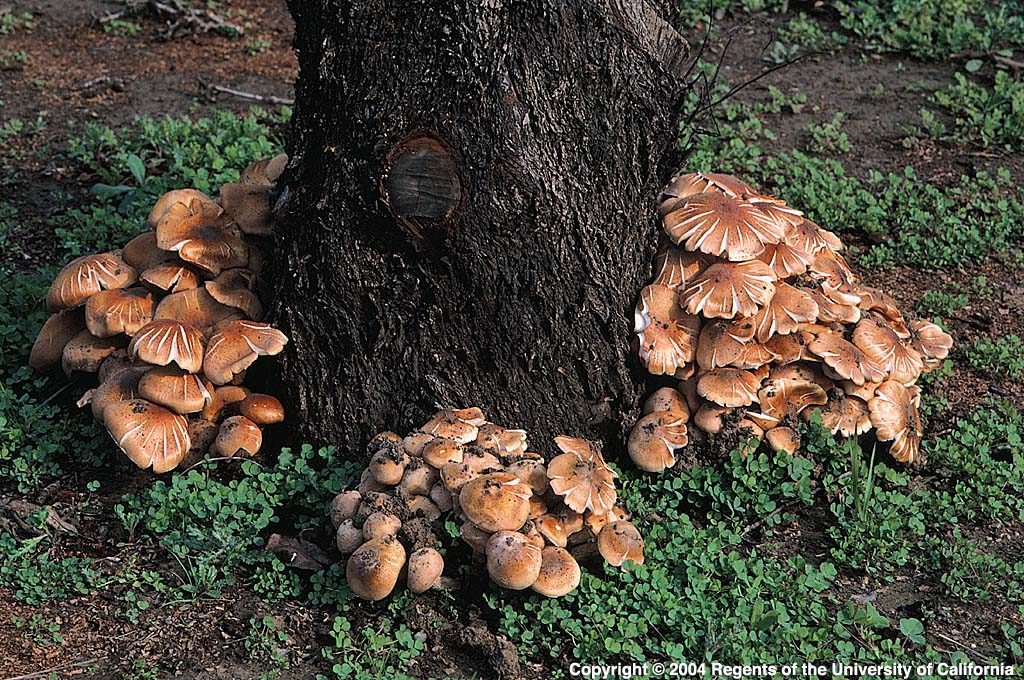One of the most under-diagnosed causes of tree failure are root rot pathogens. Here in southern California we have a few rots that plague our trees and I want to talk about one of them in particular. Armillaria Root Rot is the name of the disorder caused by the fungal pathogen Armillaria. This disease presents itself in a few different ways and it’s important to consult an arborist who understands what to look for before a diagnosis is made.
Unfortunately this pathogen is one of the most common diseases of landscape plants, but remains one of the most under-diagnosed because it is so difficult to properly identify. The easiest way to positively identify the fungus is when the mushrooms come out in fall or after a rain in the spring or summer. Unfortunately these mushrooms sprout up in a matter of hours and will be gone again within a few days. I always recommend to my clients to take a photo of any mushrooms they see around their trees and get them to me as quickly as they can. There are thousands of mushrooms that can pop up around our trees, but only a few are harmful. Armillaria is one fungus that works as both a pathogen (disease) and a saprophyte (breaking down dead wood). The ability of the fungus to move into live tissue and begin to kill the tree is correlated to many factors including tree health, species, and environmental factors. Sometimes the first symptom is a dying tree and sometimes a tree can live for many years with an active infection and still provide a service to the homeowner. Below is list of symptoms that can help with diagnosis, but always best consult with a certified arborist who can help with both diagnosis and treatment.
#1 Honey-colored or brownish-yellow mushrooms in clumps around the base of the tree.

#2 Shoestring Mycelium, often seen in heavily infected trees.

#3 Mycelial fans, found below the bark.

#4 Oozing from the main stem.

One last note: The presence of any or all of these symptoms is just the starting point for a plan to deal with this pathogen. Many times we can make changes to the tree’s environment and slow the disease, giving the tree many more years of life. Unfortunately this pathogen can also seriously impact the structural integrity of the tree and create a safety issue. Ideally your trees should be inspected by an arborist every year; if you have a serious situation like Armillaria then more frequent monitoring is recommended. Only by consulting with a certified arborist, preferably one trained in tree-risk evaluation, can you make an informed decision regarding the tree.



